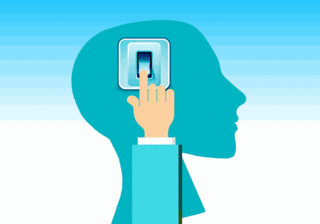Brain Computer Interface
Elon Musk’s Neuralink Unveils Brain-Computer Interface Plans
Musk's brain-computer interface neurotech plans human trials as next steps.
Posted December 2, 2022 Reviewed by Tyler Woods
Key points
- Musk said the long-term goal for Neuralink is to solve a potential existential risk in the future of humanity: artificial intelligence.
- Musk said Thursday that he plans to install a Neuralink device in his own brain in a future demo.
- Neuralink demonstrated a monkey playing a simulated version of Pong using its Brain-Computer Interface and the monkey's mind in 2021.

On Nov. 30, Elon Musk, CEO and co-founder of Neuralink, announced that the brain-computer interface (BCI) company plans to commence human clinical trials roughly six months from now.
“I could have a Neuralink device implanted right now and you wouldn’t even know—hypothetically,” quipped the South African-born American entrepreneur, who is also the CEO and chief engineer of SpaceX, CEO of Tesla, Inc., co-founder of OpenAI, and, as of October 2022, the new owner and CEO of Twitter. “In fact, in one of these demos, I will.”
Musk said in a livestreamed broadcast that the long-term goal and his prime motivation for Neuralink were to solve a potential existential risk in the future of humanity: artificial intelligence. Musk views brain-computer interfaces as a way for humans to at least have a fighting chance in the future as AI algorithms become smarter and smarter.
“What do we do about AI?” Musk said. “What do we do about artificial general intelligence? If we have digital super intelligence, that’s just smarter than any human, how do we mitigate that risk at a species level?”
In the near term, Musk says that the initial uses for Neuralink’s BCI in humans are for restoring vision and movement.
“I think we’re confident there are no physical limitations to enabling full body functionality,” said Musk in the livestreamed broadcast.
The brain-computer interface industry is emerging with a projected market size of USD $5.4 billion by 2030 with a compound annual growth rate of 13.9 percent from 2021 to 2030, according to Allied Market Research.
The term "brain-computer interface" was coined by Professor Jacques Vidal at the University of California at Los Angeles in 1973. Other names for BCIs are brain-machine interfaces (BMIs) or direct neural interfaces. Artificial intelligence (AI) machine learning has helped accelerate progress. The pattern recognition and predictive capabilities of deep learning algorithms have helped decode complex brain recordings at a more rapid pace than human technicians.
Brain-computer interfaces offer hope to those with a loss of functionality due to paralysis, epilepsy, brain injury, amyotrophic lateral sclerosis (ALS), Parkinson’s disease, Alzheimer’s disease, and other conditions to live better lives. BCIs enable people to control external devices using their brain activity.
Neuralink Corp. was founded in 2016 by Elon Musk and Max Hodak, who left Neuralink in May of 2021. The neurotech startup company has raised $373 million in five funding rounds with investors that include Musk, Robert Nelsen, Sam Altman, and others, according to Crunchbase. In a livestreamed broadcast on July 16, 2019, Musk’s original timeline for the first version of Neuralink was to be trialed in humans by the end of 2020.
Since that announcement, the neurotechnology startup showed live pigs with the BCI implants in a live broadcast demo in August of 2020, and demonstrated a monkey playing a simulated version of Pong using Neuralink’s BCI and its mind in 2021.
Fast-forward to the present day, and Musk says that the company has submitted most of its paperwork with the U.S. Food and Drug Administration (FDA) for human clinical trials.
“The overarching goal of Neuralink is to create a whole-brain interface—a generalized input/output device that in the long term literally can interface with every aspect of your brain,” Musk shared. “And in the short-term can interface with any given section of your brain and solve a tremendous number of things that cause debilitating issues for people.”
Copyright © 2022 Cami Rosso. All rights reserved.




